Living on the edge: dicing with death on some of the world’s most dangerous roads
“Don’t stand too close to the edge. I’m being serious; not too close.”
Those words from cameraman Dave Smith, reassuringly advised at a height of around 8,000ft, are still ringing in my ears after conquering two of the most dangerous roads in the world: the daunting Derebasi Curves on Turkey’s challenging D915, and the iconic, dramatic Stone Road.
Advertisement
Hide AdAdvertisement
Hide AdBoth roads are difficult places to access geographically: the former stretches south from close to Trabzon in Turkey’s north-easternmost corner, sitting on the shores of the Black Sea; and the Stone Road runs north out of Kemaliye on the D877 deep in Central Turkey.
So, when Mazda came knocking on the door and asked whether I’d be up for the challenge — tackling two of the most dangerous roads in the world over 48 hours, and covering more than 1,100km, much of it on gravel, narrow single-track roads — how could I say no? Plus they were letting me loose in the Japanese carmaker’s first plug-in hybrid, the CX-60.
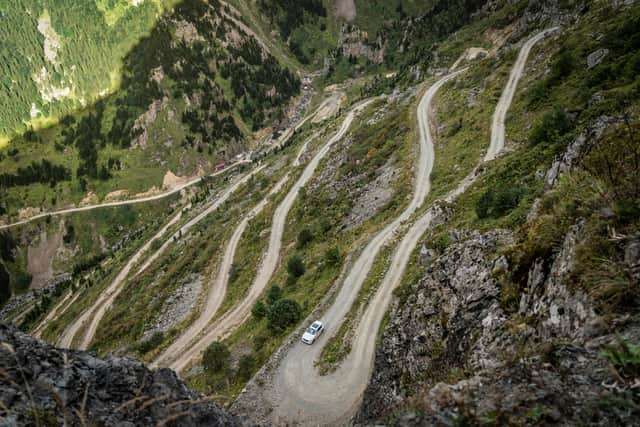

After flying into Istanbul, I caught a 90-minute flight to Trabzon, a city whose existence I’d only previously associated with its football team Trabzonspor; having reached the Champions League group stages in 2011/12, it most recently won the Turkish league in 2021/22.
It’s not a place commonly visited by Europeans. In fact, staying in a hotel which is part of a multinational chain I was informed my small group of eight UK journos were the first Europeans to stay this year. This is not a European holiday destination. Bizarrely the most common visitors are from Saudia Arabia: and apparently they visit to experience the rain.
No coincidence then that as I set out at 8am at the start of day one from the centre of Trabzon, it was pouring rain. Not the weather I wanted.
Why? Because I knew the Derebasi Curves are treacherous in dry conditions. In the wet they are almost impassable. Located near the town — I say town, but essentially it’s a small cluster of houses — of Caykara, the Curves are a series of 13 incredible hairpins which wind steeply up the single gravel track cut into the mountainside from an elevation of 5,617ft above sea level, to 6,677ft.
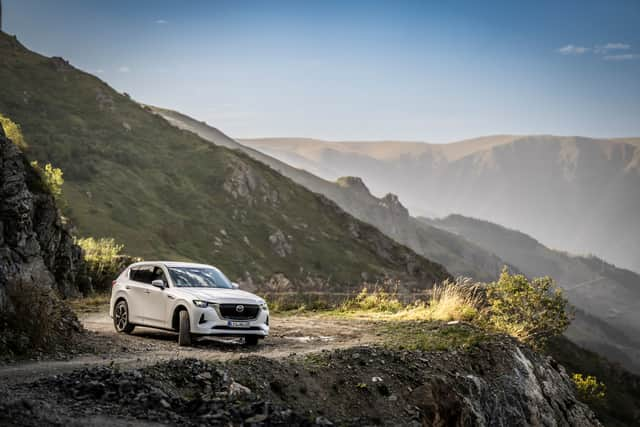

Health and safety? You’re having a laugh. There’s no protection on the road. Crash barriers? Forget it. You make a mistake anywhere on the road — especially at a few of the hairpins which are so tight you need to turn in, reverse, then complete the manoeuvre forwards before continuing your climb skywards — and you’re literally careering down the mountainside to your fate.
I’d checked the forecast for the day. I was hopeful that as my drive towards the Derebasi Curves continued, the weather on the other side of the mountains would improve.Once out of Trabzon, the D915 soon becomes unpaved. Sure it starts and finishes on asphalt, but it’s the bit in the middle where the real challenge is. It climbs, and climbs, and climbs. Even at its early stages it’s not for the faint-hearted, with almost every corner bordered by dangerous drop-offs and steep falls.
Advertisement
Hide AdAdvertisement
Hide AdSoon the road became tighter. In a left-hand drive CX-60, even close to the walls on my left-hand side, if I peered out of the passenger-side window there was no sign of the road surface below me. Just a drop. A long drop to the valley far below.
Having negotiated the opening 800-metres into the first really narrow section, I came across my first challenge. Coming towards me was a local in a very large minibus. He wasn’t for moving. It was up to me to reverse. No probs: I could do that.
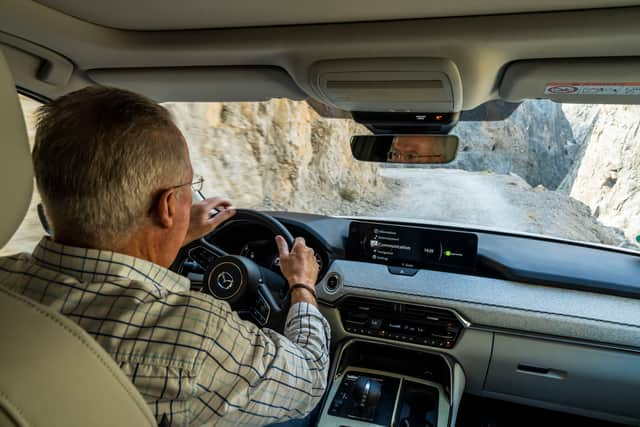

Checking my rear-view mirror, I engaged reverse gear and inched backwards. Then, round the corner comes a local delivery driver. Boy, this is fun. Thankfully he realised he had no alternative but to reverse. I followed suit, determined to show I’m not fazed by the massive drop on my right-hand side.
After 200-or-so metres, we found a slightly wider section which allowed me to steer to the right-hand side of the minibus as it slowly inched past me on my left. It resembled a sort of painfully slow ’Strictly’ dance move choreographed by two drivers, one of whom was making his debut in the event. Thankfully when the score boards were shown I got a full display of 10s.
Buoyed by my success, I continued rising through the valley before seeing the satnav display a graphic which looked like a medical illustration of someone’s intestines. That was the Derebasi Curves.
Rising steeply above me, they were, unquestionably challenging. Sure they’re not for the inexperienced driver. Nor the location to discover you suffer from vertigo. But given the fact the weather was now dry, though the fog was rolling in, the Derebasi Curves were drivable. Game. On.
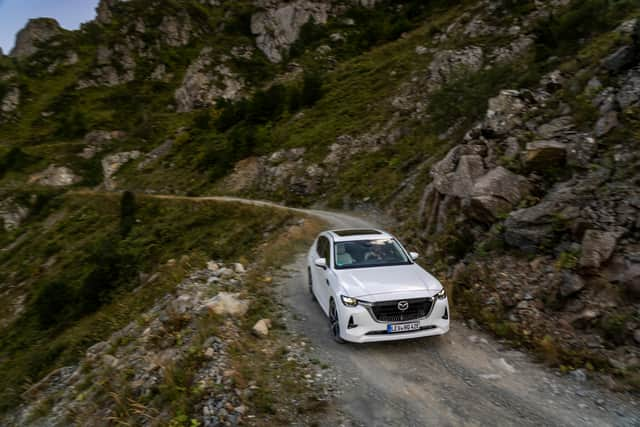

In fact they reminded me instantly of driving the Pass of the Cattle, the historic single-track mountain pass which rises through the mountains of the Applecross peninsula in Wester Ross in the Scottish Highlands.
The secret to conquering both: stay focused; don’t drive too fast; be sensible; and, most importantly, definitely most importantly, don’t look down.
Advertisement
Hide AdAdvertisement
Hide AdThe big CX-60 rose to the challenge, always remaining surefooted. Though the occasional scramble of loose gravel under the Mazda as I negotiated the tightest of corners was an instant reminder that this was no Sunday afternoon drive.
Once at the top, just below the now foreboding cloud level, from my vantage point I could look down over the Curves. Gosh the track looked narrow, especially in the context of seeing another car coming up it. And the view back north, up the valley I’d driven, was spectacular. An ever narrowing sinew of gravel track receding into the distance as it meandered down the facing mountainside.
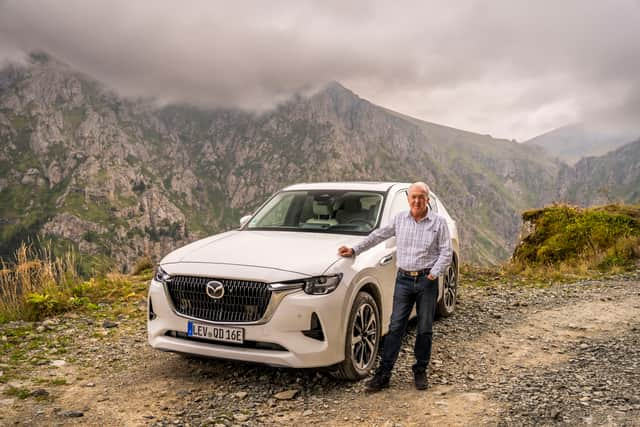

With a self-congratulatory pat on the back, it was off to my overnight accommodation, the route to which included, in complete contrast, superfast, super smooth Turkish roads which were almost empty of traffic. And before arriving at my hotel in Elazig, I experienced a beautiful sunset crossing of the Euphrates from Pertek to Meseli on the Iskelet Pertek feribot.
It was the perfectly relaxed way to end the day. Well okay: that was after having been handed a small paper cup of steaming hot Turkish tea by a kind and smiley “ferry policeman” as I waited in the ferry queue before boarding. Problem was, as he held the rigid base at the bottom of the cup to hand it to me, with no handles I had to hold the top rim. Yup, of course, the top edges being less rigid eased together and the boiling hot tea spilled over on to my fingertips.
Not wanting to insult his kindness, I endured the pain; kept smiling, didn’t scream — or cry — and quickly perched the cup on the central console. Then using Google translation — boy was it helpful on this trip — thanked him graciously for the exceedingly tasty tea.
Oh, that plus having been shouted at by the Turkish crew on the ferry, understandably, in Turkish, as they directed me into the tightest, most awkwardly-positioned space on the roll-on roll-off deck. With no idea where they wanted me, I finally got one of them to give me the universal hand signals to direct me. That, to be honest, was the most stressful moment of the two-day trip. The crossing, in contrast, was beautifully majestic … and calm.


Day two dawned with bright sunshine. The driving route to Kemaliye, and the start of the Stone Road, was again super smooth and took me through some of the most dramatic scenery I’ve ever seen. Turkey is vast. And the views, certainly in the central regions of the country are equally huge.
At a height of around 3,300ft, and tucked away deep in the Munzar Mountains, many of the buildings in Kemaliye mirror those found in the Swiss Alps. Why? Because while, like the bulk of Central Turkey, summer temperatures sit in the high 30s — it was 36 degrees when I was there — in the winter the town is often cut off from civilisation when it’s hit by two-metre high snowfalls.
Advertisement
Hide AdAdvertisement
Hide AdAfter stopping off for lunch in a 104-year-old restaurant, and having been served the three-hour cooked beef stew recommended by the fourth-generation of the family running the establishment, it was off to tackle the Stone Road.
This, certainly is not for anyone of a nervous disposition. While the Derebasi Curves were most certainly challenging, the Stone Road is not only equally scary and dangerous, but added a whole new dimension of the spectacular to the drive.
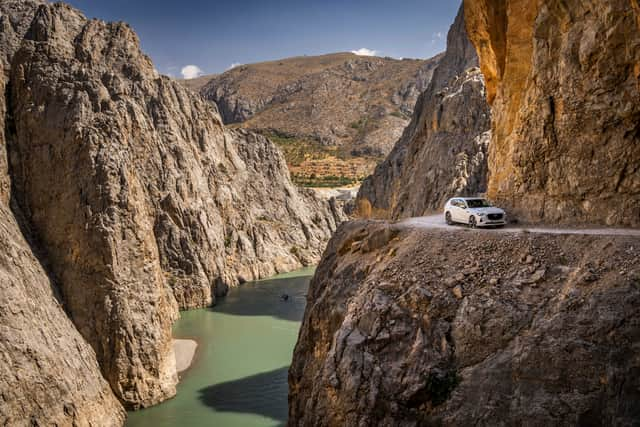

Initially hand-chiselled by local people through the rock which lines either face of the gorge carved out by the Euphrates river now far below, the road took 132 years to complete. Work started in 1870 and, with work often stopping for periods as long as 20 years, its 8.7km length was only finally completed in 2002.
Not only is it a massive feat of engineering, but it delivers sensational views up and down the gorge, which rises in places to 600m. No surprise then that it’s a popular place for base jumpers who leap off the top before landing back in Kemaliye.
There is also, always, a threat of danger in driving the road which, in a few places is no wider than two metres. A tight squeeze for the CX-60 which, remember, is a not insubstantially-sized luxury SUV.
Get too close to the edge and the gravel rubble which has built up at the outer edge of the narrow track tumbles hundreds of feet into the river below. And while it does have an amazing 38 tunnels, all unlit, the rest of the open track offers no protection from the fall below. It’s not the place to take your eye off the road.
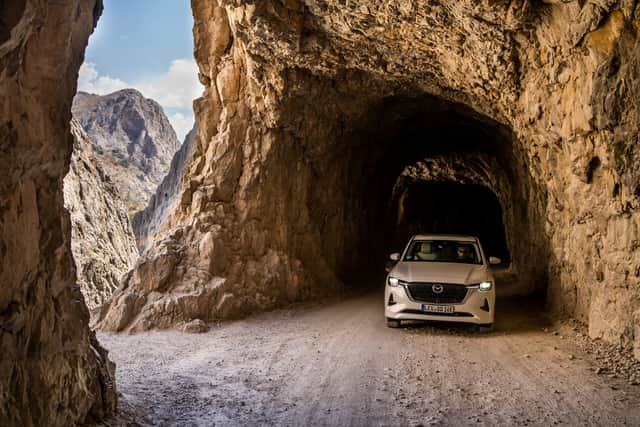

All too soon I’m through and out the other end, back on to asphalt, and the six-hour dash — yup, two 12-hour days of driving — to the final overnight halt at the Cave Hotel in Urgup, Cappadocia, in the province of Nevsehir.
But before arriving, Turkey threw up one more, completely unexpected challenge. As dusk fell, and with the outside temperature gauge reading 24 degrees, the sky suddenly darkened and there were two sharp, loud thumps on the Mazda’s roof.
Advertisement
Hide AdAdvertisement
Hide AdWithin seconds, the temperature had plummeted to 13 degrees and the road was hit by a raging hailstorm with chunks of ice often the size of golf balls. The noise was deafening, and what cars were on the dual-carriageway were all forced to stop at the side of the road.
Then, as quickly as it had arrived, the shower disappeared and the temperature rose back into the 20s. It was a bizarre way to end such a memorable, epic drive.
A drive which confirmed that Mazda’s luxury SUV, which you’ll regularly see on the motorway, in town, on the school run, or parked in your favourite supermarket car park, has the ability and agility to not only tackle, but conquer the world’s most dangerous roads.
Comments
Want to join the conversation? Please or to comment on this article.